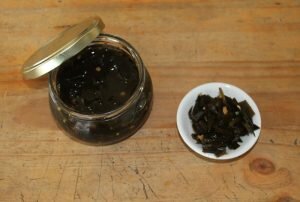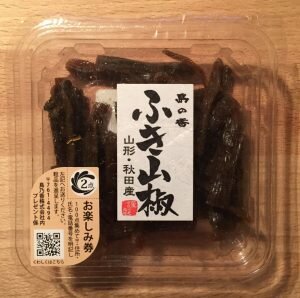Looking for a new way to ferment vegetables?
Something quick and easy to make fermented pickles that are a great condiment to any meal. A Nuka bed offers a way to get lactobacillus bacteria and wild yeast, without having to vent
or clean up exploding glass jars!
It makes a great RAW, fermented/cultured, and vegan condiment.
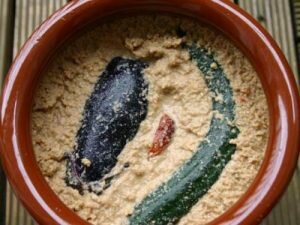
What is a Nuka ‘Bed’?
Nukazuke (糠漬け) are a type of Japanese pickle, made by fermenting vegetables in rice bran (nuka). Almost any edible vegetable may be pickled through this technique, though traditional varieties will include eggplant, Japanese radish (daikon), cabbage, and cucumber. The taste of nuka pickles can vary from pleasantly tangy to very sour, salty and pungent. These pickles also retain their crispness which adds to their popularity.
Fish nukazuke is also common in the northern part of Japan.
Sardines, mackerel, and Japanese horse mackerel are frequently used. Some people pickle meat in nuka-bed, too.
If pickling meats, use a separate nuka bed and not the bed for vegetables.
The nuka-bed is traditionally kept in a wooden crock but ceramic crocks or even plastic buckets are also common. Many Japanese households have their own nukazuke crocks which are faithfully stirred by hand every day. Due to varying methods and recipes, flavors vary considerably, not only from region to region, but also from household to household.
Pickles (tsukemono) are an important staple of Japanese cuisine, and nukazuke are one of the most popular kinds. They are often eaten at the end of a meal and are said to aid in digestion. The lactobacillus in nukazuke pickles may be a beneficial supplement to the intestinal flora. They are also high in vitamin B1.
How to Make Your Own Nukazuke Pickle Bed
RAW – Vegan – Gluten Free
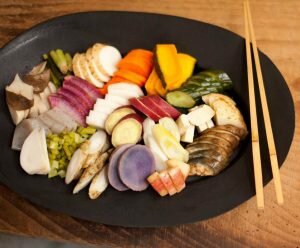
Needed Ingredients…
– Rice Bran, no-GMO and/or organic – 20 oz
– Kombu Seaweed – one leaf, cut into very small pieces
– Sea Salt – 1/4 cup or to taste
– Korean Chili Flakes – 1/8th to 1/4 tsp
– Dried Citrus Peel – 2 tbsp
– Dried Bonito Flakes – 1/8 to 1/4 cup – Optional
– Fresh lemon or lime juice – enough to cover top of nuka bed
– Condiments or veggies of your choice – Keep whole
– Also, for a new starter bed add some fresh fruit like apples
– A fermenting vessel – lead free
Directions…
Note: It needs to be stored under refrigeration after opening to avoid mold. Storage term: 12 month (This usable time is only a guide. If you stir well NUKA-BED with your hand once every 2-3 days, add extra NUKA rice bran and salt as necessary, it can be used semi-permanently.)
If you are using the nuka kit purchased from us, you will receive two packets. The larger pack is the rice bran and flavorings. The smaller packet is the Nuka starter with fresh sliced fruit.
1. Start by opening the large packet or mixing the above ingredients together and adding enough filtered water (no city tap water please) to make a thick paste. Add the water in small amounts until the correct thickness is obtained. The bed should be like a thick paste.
Over time, the addition of the vegetables will add water to the mixture and more fresh rice bran and salt will be needed.
2. Now add the small packet that contains the nuka starter and fresh fruits. If making your own nuka bed, add some slices of fresh cut organic or wild apples (this adds wild yeast and wanted bacteria).
Mix in the nuka starter by hand until well blended. Also, when starting a new nuka bed from scratch, it will take time for the bacteria and yeast to grow through the bed and become 100% active. The lemon juice will help with retarding mold growth.
Note: It is important to mix the bed by hand to spread wanted bacteria within the bed mixture.

3. Add the vegetables that you wish to pickle. Common choices are roots like burdock and carrots, small eggplant, Japanese radish (daikon), cabbage, and cucumber. We like doing radishes and cucumber!
Rub the vegetables with sea salt then place into the nuka vessel pushing them down to cover with the rice bran mixture. Sprinkle the top of the bed with the lemon juice and more salt.
4. Allow the vegetables to sit in the nuka bed for 3 to 5 days. Culturing time may vary depending on the vegetables used and temperature. The taste will move from tangy to very sour the longer the pickles set in the nuka. Do not ferment at room temperature during the hot summer months or the bed may become contaminated with molds.

Mix by hand each day making sure to replace the vegetables under the rice bran. Salt may be sprinkled over the top to help retard mold growth, too. Once complete and to your liking remove the nuka pickles, slice, and serve. Start a new batch or place fermenting vessel in the refrigerator keeping it mixed to prevent mold growth.
Enjoy this method of making great quick pickles without the mess of multiple jars, airlocks, weights, and other unnecessary items. The taste and flavor of the cultured nuka vegetables is second to none! If you want a premixed nuka bed, we have them available in traditional or vegan, at our web store – store.organic-cultures.com
Happy Culturing!

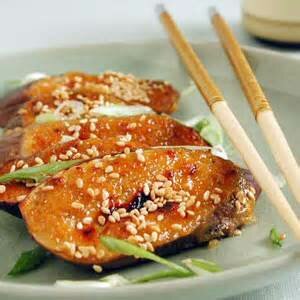 These condiment sides are a great way to enhance a meal or dish. Very easy to make and uses only a few ingredients. The Japanese use many of these condiment sides every day and most contain minerals and micro-nutrients that normal
These condiment sides are a great way to enhance a meal or dish. Very easy to make and uses only a few ingredients. The Japanese use many of these condiment sides every day and most contain minerals and micro-nutrients that normal




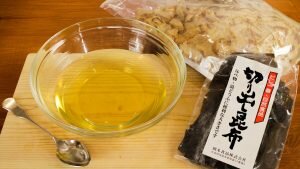 Not really a condiment as it is used as a base, to build other flavors from. Used in many traditional Japanese dishes for that great added layer of flavor, called umami. Simple to make, but it adds a lot of flavor to a dish. Vegans and veggies can just make a seaweed and veggie dashi vs. using the bonito flakes.
Not really a condiment as it is used as a base, to build other flavors from. Used in many traditional Japanese dishes for that great added layer of flavor, called umami. Simple to make, but it adds a lot of flavor to a dish. Vegans and veggies can just make a seaweed and veggie dashi vs. using the bonito flakes.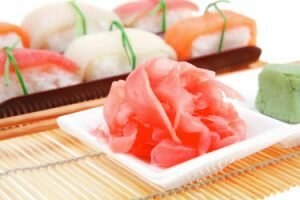

 What is Tsukemono?
What is Tsukemono?


